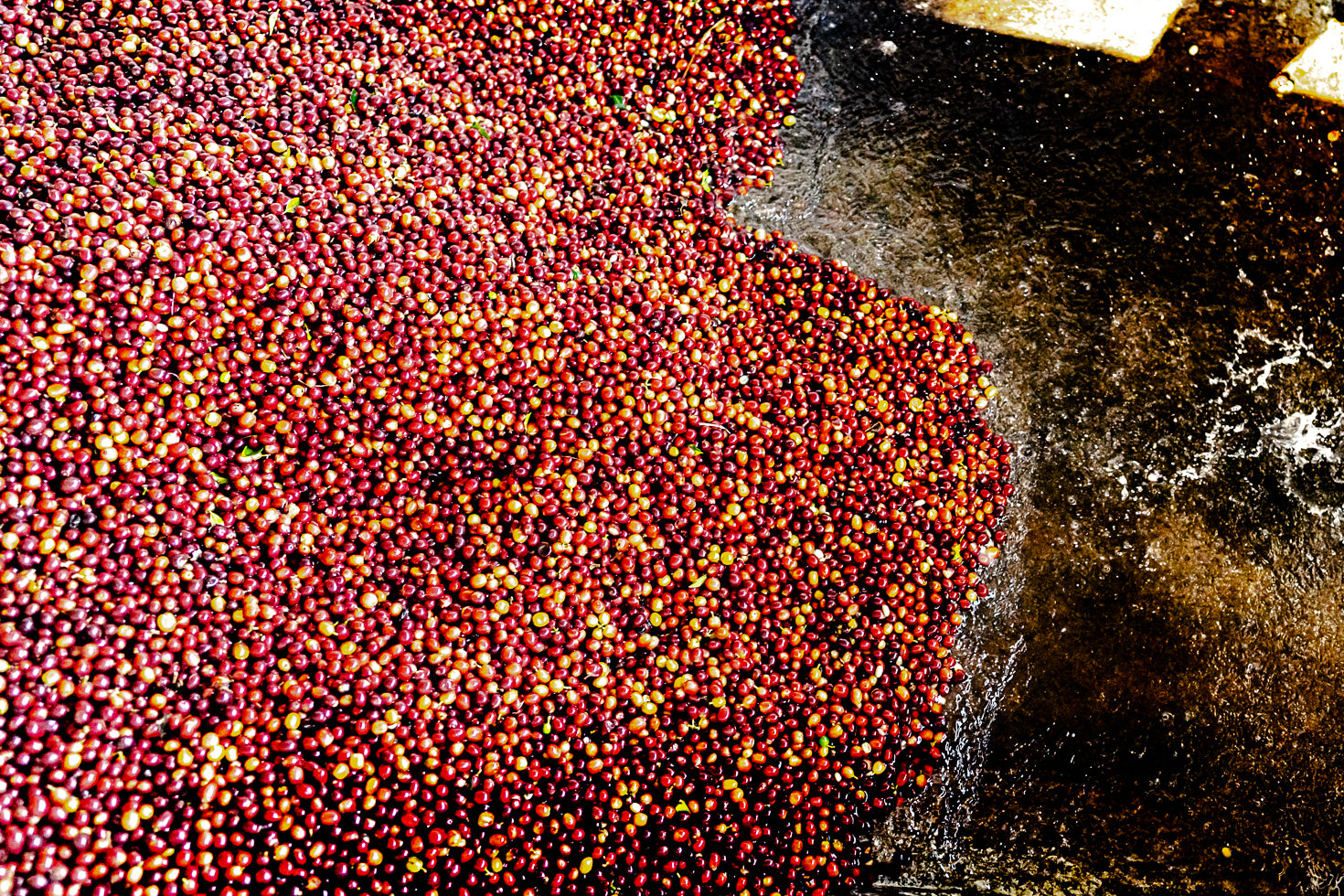We look at how our latest Ethiopian coffee, Ayele Tulu, was prepared at origin, taking a deep dive into the role of fermentation to offer some thoughts on how practices in winemaking might point to a more carefully controlled way of managing this process in coffee.
Last month we roasted the final batch of this season’s Guji. Anyone who knows, loves and already misses this delicious Natural will be pleased to see we have just released two new Ethiopian coffees; one of which is sure to satisfy those looking for an alternative to their favourite fruit bomb …
Ayele Tulu
The coffees are both sourced from Ayele Tulu - a new relationship for us. Operated by Heleph coffee and perched on the hilltops of Bona Zuria in Sidama, this producer is growing coffee at a staggering 2400 metres above sea level. Having sampled the pre-shipment lots last summer we couldn’t be more excited to finally land these coffees.
Washed or Natural
The team at Ayele Tulu are doing some amazing work, we were so impressed we took their washed and natural lots - both high scoring coffees.
The washed lot was cupped at 86, the natural at 88. As well as bagging two incredible coffees for the menu, it also allowed us to compare lots from the same area, made by the same set of producers, processed in a different way. It was exciting to see how the processing method plays such an important role in what we taste in our cup.

These coffees have very different flavour profiles, as you’d expect when comparing a Washed with a Natural. The Washed has plenty of stone fruit and redcurrant, with a classic jasmine aroma - a top-notch Ethiopian, deliciously sweet and clean.
Compare that to the Natural, which is a super-jammy fruit bomb with strawberries, grapefruit and wine gums; basically everything we love about Naturally processed Ethiopian coffees!
Except ... the coffee wasn’t a straight-forward natural.
The team at Ayele Tulu had prepared this batch using a process they described as a natural anaerobic fermentation. It tasted amazing - but what exactly is anaerobic fermentation and how does it work?
Fermentation in Coffee Processing
We use the term processing in coffee to describe the methods used to remove the seeds i.e. green beans, from the coffee fruit - or cherry.
Processing coffee will always involve some fermentation of the fruit material and it helps to separate the seeds from the fruit. From Naturally processed coffees to non-mechanically Washed lots, fermentation occurs when yeast and bacteria start converting the sugars and acids present in the coffee’s mucilage. This activity generates different organic acids, carbon dioxide, ethyl alcohol and other compounds.
The fermentation continues until there’s nothing left for the bacteria to work with, or until the environment becomes inhospitable to them - normally when the coffee is fully dried to 11% internal moisture.

Producers typically attempt to control the speed of the fermentation by using open tanks, buckets, water channels and other vessels to contain the coffee during this process. Different techniques used during the drying phase, on raised beds or patios, can also manage the fermentation process.
Anaerobic Fermentation
In recent years we’ve started to see farmers experimenting with a process widely labelled anaerobic fermentation, particularly in South and Central America, in places like Costa Rica and Colombia. As we found out with the coffee from Ayele Tulu, there are also producers in the highlands of Ethiopia who are now using using this technique!
So what is Anaerobic fermentation and how is it different?
Anaerobic fermentation is used to describe a processing method where ripe coffee cherry is placed in a fully sealed and oxygen deprived fermentation tank. Essentially the producer creates a more controlled environment where the fermentation takes place.

Creating the controlled environment will involve the cherries being placed in air-sealed barrels or sometimes stainless steel tanks. As the fermentation process creates heat, the temperature of the containers will need to be monitored and they may be placed in a cooler environment. After around 18-24 hours, the anaerobic process will start causing a breakdown in the fruit and there will be a buildup of CO2 pressure in the tank. This pressure forces the flavours of the fruit into the coffee parchment. Pressure is then released through one-way valves at the top of the barrel - or sometimes it will simply be released through pipes.
Controlled fermentation
Exploring fermentation in coffee can easily lead us to the comparisons often made between coffee and wine making, or even craft beer. There are certainly similarities but compared to these practices speciality coffee is very much in its infancy. Perhaps because of this, change can seem fairly constant. Producers are often seeking new and improved ways to set themselves apart and improve and manipulate their coffee’s flavour profile to help deliver more exciting and interesting coffees to roasters and coffee drinkers - anaerobic fermentation is an example of this experimentation.
As all fermentation is in effect anaerobic, i.e. it happens without oxygen, labelling a process anaerobic fermentation is a little confusing, but it does show an increased focus on controlling the fermentation phase of processing coffee.
Returning to the comparison between speciality coffee and winemaking leads us to Lucia Solis, a coffee fermentation specialist with a background in winemaking at Napa Valley, California. Lucia points out that historically fermentation in coffee was a relatively passive stage in production - it helped remove the seed, but had a fairly neutral effect on flavour. Wheras in wine, fermentation is an intentional process with the express goal of creating flavour.
As Lucia explains, fermentation in winemaking is crucially important in the transformation of the grape juice into wine, as such the fermentation is very carefully controlled. This control means that even the shape and material of the vessel in which the grape juice is held influences the flavours we enjoy. The yeasts selected will influence the flavour. Grapes may be picked at night time (when it's cooler) to help control the fermentation and ensure that the process starts at a set time and in a controlled way; this also influences the flavour.
Listening to Lucia, it’s clear that as someone who has made the transition from wine to coffee, one of her frustrations is the language used by coffee professionals. As Lucia puts it - I think we need more words in coffee!
Sometimes the world of speciality coffee seems to have more than enough technical language but I think Lucia makes an important point - the language and labels we use are often applied inconsistently. Fermentation is a case in point as the process can be carried out in many different ways, with very different results and can therefore mean very different things.
Perhaps the most important insight is that as producers seek greater control over fermentation the possibilities for flavour and consistency will increase. If the coffee from Ayele Tulu is a sign of what can be achieved with a more carefully managed fermentation process, we're excited to explore more coffees that have been prepared in this way.





Leave a comment
This site is protected by hCaptcha and the hCaptcha Privacy Policy and Terms of Service apply.